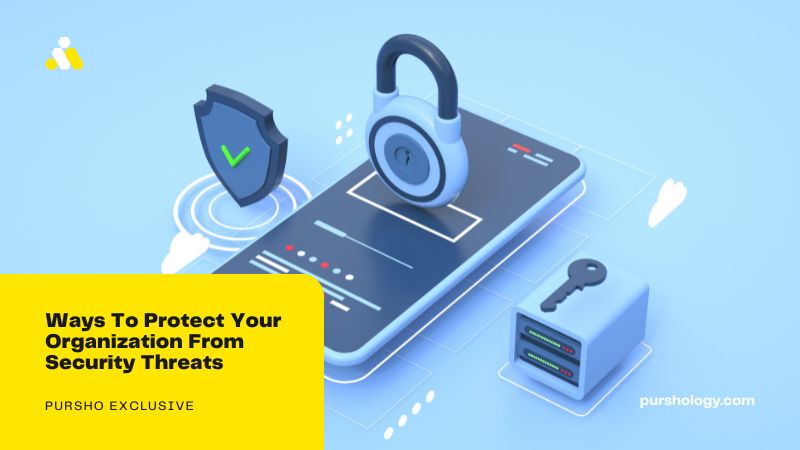With the constant shift in technology in the cybersecurity landscape, new threats and resolutions are emerging. Today’s security measures that work against the recent cyber threats might become obsolete after some years. That’s one noteworthy reason why organizations must work on minimizing the risk of data security breaches. For this reason, they must be vigilant of the types of security threats they face (both old and new).
As the modern dependence on security and technology emerges, the business sector becomes more reliant on security. The world is now a digital space, and it becomes more tech-savvy. This is where protecting data from hackers becomes all the more crucial. Therefore, businesses must implement some defending elements to protect their work from the increasing cyber-crimes.
Talking about cybersecurity protection, it does not stay within the boundaries of just a complex password or the premium firewall subscription. So, now that you’re astonished about the ways, here’s presenting the list that explains the top ways of protecting your organization from cybersecurity threats.
1. Understanding Everything About Data and How to Protect It
Before you start adapting newer technological revolutions like AWS Key Management for data security protection, it is imperative to learn what you must protect. Some organizations fail to recognize the pieces of data necessary for protection. That’s where they can’t do anything when the data gets exposed to cybercriminals. And without even understanding, their secret data might have been hidden inside the system.
But applying for protection without any evidence might decrease the business revenue. If you understand which data to protect, it may become easier to build defense and create policies prohibiting data access without permission.
2. Instilling Discipline And Enforcing Knowledge Campaign
There’s no denying the importance of discipline in any business. And to proceed with such an optimistic attitude, all you need to do is enforce a knowledge campaign. What you can do is conduct seminars and inform personnel about the specific responsibilities.
Additionally, you can create policies that justify their responsibilities. Finally, even if you aren’t a part of the IT industry, your small-scale business also requires this move. After all, low-tier companies also require cybersecurity solutions. Users should get the expertise training about correctly accessing the devices. Furthermore, they must be knowledgeable about troubleshooting the devices to prevent cybercrimes.
Amidst all the training provided by your organization, one should not miss out on highlighting the value of security breaches and how it hampers productivity. It also decreases the organization’s output quality. Expertise training is crucial about how to avoid violations too.
3. Conducting Seminars and Training
As organizations seldom notice how to deliver security options for better business execution, it becomes crucial to train employees through seminars and training. It’s significant to make them learn cybersecurity awareness and the fact that it’s a fundamental concern despite the move towards tech integration. Some salesforce consultants can also help you with the same.
A business should be responsible enough to train personnel for data breaches and cybersecurity issues. This way, these organizations can avoid persisting problems in the distant and foreseeable future. You cannot deny the fact that recognizing potential problems may prevent unnecessary actions and protect the network. And businesses should also agree to the multiple benefits of it.
Employees who are not that tech-savvy might experience challenges in the middle of a discussion related to cybersecurity. For them, seminars and training might help them comprehend every cybersecurity topic precisely.
4. Encryption of Data
Securing the online data is a prerequisite, and one must consider understanding how to perform the steps. After all, encrypting data would make it impossible for cybercriminals to break the code and get access to the hidden sensitive information.
Data encryption helps protect the data even when hackers crack the IT vault. But, even then, it becomes incredibly challenging for hackers to evaluate data.
5. Using Biometrics and Two-Factor Authentication Besides Passwords
Strong passwords are nothing when exposed. Thus, even if you implement a solid password, the protection of your account with lowercase, uppercase, and the mix of characters remain in question. There’s no denying the fact that it’s one more layer to safeguard the data.
You can use two-factor authentication and biometrics because changing the passwords at a frequent interval of time is just not enough. Having a website requires understanding that only some users have limited access.
Let’s talk about plugin installations – they must be performed by administration and editors’ accounts. Or let’s say that contributor accounts can also have its access. But giving its access to all users would mean a higher risk of security thefts.
6. Limiting the Wired Network Access
Elucidating about security threats would not leave the wired network out of the discussion. While hacker infiltration may happen in movies, it is a reality in this pragmatic life. Not to forget, hackers can use social engineering and gain access to the network. So, you must always limit the access of your wired network as well.
Summing Up
The discussion of cybersecurity holds value in a dynamic business world of technology. As businesses are dependent on the Internet-centric world, embracing these ways can be a safer bet. After all, the security culture of any organization requires feeding and care. Thus, one must invest in the security culture because the sustainable security culture is always bigger than just an event.







